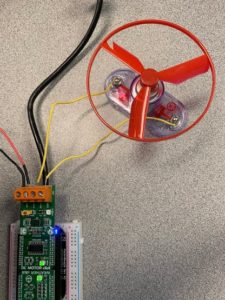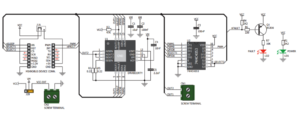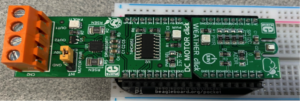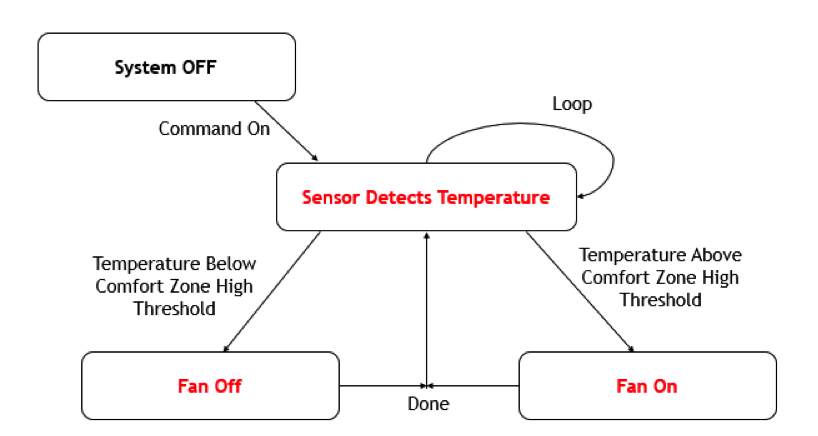
Nikhita Gangla
Posted on August, 29, 2019
Categories
Recent Posts
- Octavo Systems Unveils the OSD32MP2 Series: Revolutionizing System Design in the Electronics Industry April 9, 2024
- Securing the Future: The Integral Role of SiP Technology in Thwarting Physical Attack Vectors in Embedded Systems March 12, 2024
- Developing Secure Embedded Systems: Best Practices and Strategies March 12, 2024
- Heterogeneous Integration (HI) and System-in-Package (SiP) Technology: A Comprehensive Overview February 20, 2024
- Understanding The Differences Between System-on-Chip (SoC), Package-on-Package (PoP), System-on-Module (SoM), and System-in-Package (SiP) January 17, 2024
Miniature PocketBeagle® HVAC Shows Ease of Design with OSD335x SiP

The Heating, Ventilation and Air Conditioning (HVAC) market is expected to reach over $130B in the next five years. Driven by the rise in construction globally, plus refurbishment of homes and businesses, the demand to put in new units is increasing rapidly. Smarter equipment with more sensors, higher efficiency, reliability and ease of maintenance are priorities for new designs. As with most rapidly growing electronics markets, the need for fast turnaround of embedded systems designs while maintaining cost controls and increasing features is critical to a strong go to market strategy. Increasingly these systems also need be configured and controlled based on information being received in real time. In order to keep up with the rapid rate at which technology is transforming the HVAC industry, design engineers need a flexible platform on which they can spend time developing the features that make their application unique and efficient, and not have to channel valuable resources into tedious complexities such as power management and DDR routing. They also need reliable, open source hardware and software design tools. The OSD335x-SM System in Package based on the TI AM335x, is the perfect solution as it provides engineers the solid foundation that they need. With the availability of low cost development tools, such as PocketBeagle® from BeagleBoard.org®, rapid prototyping HVAC features is easy.
Rapidly Prototype HVAC with OSD335x Based PocketBeagle® Single Board Computer
We built a mini HVAC unit to serve as a proof-of-concept for how off-the-shelf components using the Octavo Systems OSD335x-SM SiP exemplifies the ease of use to prototype a full HVAC system. This application can be extended for any larger, more complex building automation control system.
To get up and running quickly and easily, we decided to prototype our Mini HVAC unit with the OSD3358 SiP using PocketBeagle® from BeagleBoard.org®with MikroElektronika Click Boards™. The boards from BeagleBoard.org®, a customer of Octavo Systems, are excellent examples of using the OSD335x SiP in a design. PocketBeagle® is a completely open-source, highly affordable super tiny single board computer featuring the AM335x based OSD335x-SM SiP. PocketBeagle® has header pins that conform to the MikroElektronika mikroBUS™ Click Board™ standard. This is an open standard interface for which over 450 compatible add-on boards provide functionalities that include sensing and communication. Several Click Boards collect pertinent sensor data such as temperature and humidity as well as provide control functions relevant to an HVAC prototype.
The goal of our miniature HVAC unit design is to be able to measure the temperature of the surroundings, and when the temperature rises beyond a certain threshold, to turn on the motor i.e. turn on the fan. In order to achieve this, there are two hardware additions required for PocketBeagle®.
Configuring the DC Motor Driver for PocketBeagle® HVAC
In order to drive our motor, we chose to use the MikroElektronika DC Motor Click Board. This board features the DRV8833RTYH-Bridge motor driver, 74HC4053 multiplexer, and two screw terminals. The 74HC4053 multiplexer is incorporated into the design so that the motor can be run with only one PWM line needed.
The DC Motor Click Board™ schematic is shown below.

As seen above, DC MOTOR click communicates with the target board via SELECT1, SELECT2 and nSLEEP control lines, PWM input line and nFAULT feedback line.
Obtaining Temperature Data with the Weather Click Board for PocketBeagle® HVAC:
The Weather click board has the BME280 integrated environmental unit from Bosch. It is a sensor that detects humidity, pressure, and temperature. It is capable of interfacing with the target MPU over both I2C or SPI. In our application, only the temperature will be polled, and the click will communicate with the OSD335x using I2C.
Hardware Configuration of Mini AC Unit Prototype
PocketBeagle® headers can fit two Click boards, in position 1 and position 2. For our project, we used position 1 for the DC Motor Click on the I2C2 interface, and position 2 for the Weather Click on the I2C1 interface.
As such, the hardware configuration of the whole system was implemented as shown below.

Software is Easy for PocketBeagle® HVAC Prototype thanks to Linux
PocketBeagle® and MikroElektronika Click Boards™ make prototyping uniquely easy from a software perspective. PocketBeagle® can run a Debian Linux distribution that includes support for many different programming languages. Additionally, MikroElektronika Click Boards™ have many software libraries developed around their hardware, which makes interfacing and using the features of the board extremely easy.
For the Weather Click™, we used an Open Source software Python library from Adafruit. This gets the necessary data from the BMP280 sensor on the board.
We wrote a software driver in order to configure the actual physical motor driver on the DC Motor Click™, and this driver used the Adafruit_BBIO library for GPIO and PWM, which configured the motor. It was easy then to build a simple program to turn the motor on and off based on the data received from the sensor on the Weather Click™ .
The software for this program is characterized using a simple state machine as shown below.

The software has been implemented such that once the program is running, the Weather Click™ obtains the temperature read by the BME280 and transmits the data via I2C to the MPU. The MPU checks whether the temperature is above or below the threshold, and sends a signal to the DC Motor Click™ to turn the motor on or off respectively. As long as the program runs, the Weather Click™ will keep polling the temperature every 5 seconds, and sending this data to the MPU.
Project Instructions and Taking HVAC Prototyping to the Next Level with IoT
Our miniature system showcases how easy it is to prototype sensor systems with the OSD335x System in Package by taking advantage of low-cost and highly integrated hardware solutions as well as open-source reference designs and software resources. Certainly with the power of Linux and the performance of the SiP, additional sensors can be added to increase the intelligence and efficiency of the system, while also adding many more motors and IO features to create a feature rich system.
Please follow the instructions on our Hackster.io page for this project to replicate
the setup and prototype your own OSD335x-based mini PocketBeagle® HVAC unit.
Taking building automation control systems such as HVAC to the next level and integrating into a full IoT systems is easy with the OSD335x System in Package and the support tools available. To gain more insight on the OSD335x’s capabilities for industrial IoT applications, please take a look at the HVAC Factory Automation End Equipment series, written by Calvin Slater, who is a Senior Controls Engineer in the Building Automation System Control Industry and is experienced in developing embedded hardware as well as open-source building automation frameworks.
We would love to help you with your next design. Please contact us on our forums https://octavosystems.com/forums/ our applications engineering staff can guide you on the use of SiP technology, review design layouts, help with software, answer getting started questions and more.
